'Madonna: A Rebel Life' biography celebrates the impact of a pop icon: 'This is who I am'
Purchases you make through our links may earn us and our publishing partners a commission.
To many, she’s the Queen of Pop. But Madonna had to fight for her crown.
The illustrious career of the pop music iconoclast, who’s been shocking the zeitgeist since her '80s debut, is the subject of Mary Gabriel’s “Madonna: A Rebel Life” (Little Brown, 813 pp., out Tuesday), a wide-ranging biography that examines Madonna’s journey from suburban outsider in Rochester Hills, Michigan, to global phenomenon.
“She has empowered so many people and enriched so many people, and in the process, she’s had to defend herself every step of the way,” Gabriel tells USA TODAY. “To recognize that is really a show of respect and a way of thanking her for what she’s done.”
From taking on Catholicism’s rigid gender norms to flipping the script on women’s bodily autonomy, here are some of the biggest ways Madonna changed pop culture.
Check out: USA TODAY's weekly Best-selling Booklist
- “Madonna: A Rebel Life” at Amazon for $30
- “Madonna: A Rebel Life” at Bookshop.org for $36
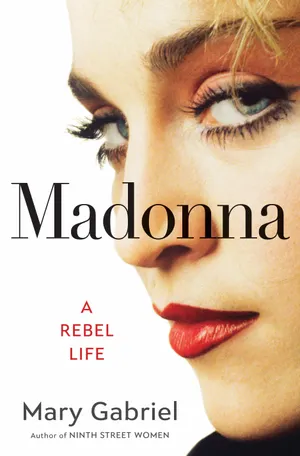
Madonna’s rebellious Boy Toy style gave ‘freedom’ to young women
While the success of Madonna’s first two albums, 1983’s “Madonna” and 1984’s “Like a Virgin,” made her a bona fide popstar, it was her glam-punk Boy Toy look that signaled her emerging feminist influence. Named for a cheeky belt she wore on the “Virgin” album cover, the aesthetic consisted of crop tops, lacy fingerless gloves and crucifix necklaces.
The look caught like fire with Madonna’s young female fans, who were dubbed “wannabes.” But while critics wrote Madonna off as the “archetypal high school slut,” as Gabriel puts it, the Boy Toy style conveyed a deeper message of self-empowerment to young women.
“It was an expression of absolute freedom and taking control of herself, taking control of her look (and) being who she wanted to be,” Gabriel says.
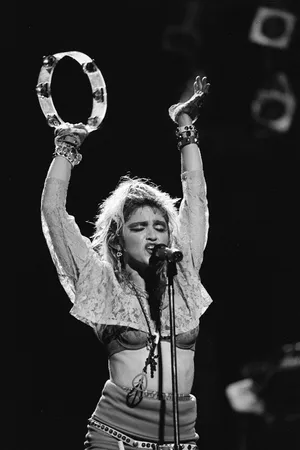
Madonna’s debut album challenged ‘racist’ music industry with progressive sound
Madonna’s self-titled debut album featured a mix of high-energy electropop – inspired by her childhood love of Motown – that would define her musical style. The album initially “languished” on the charts, in part because of racialized marketing. Madonna became a “star on Black radio” as record label executives struggled to promote her racially ambiguous music to a broader audience.
“The industry was so racist and so limited in its thinking that it couldn’t imagine that a white woman singing R&B or dancing to an R&B rhythm would actually appeal to a white audience,” Gabriel says.
The album eventually broke through, earning Madonna three top 20 hits on the Billboard Hot 100.
Madonna defied Catholicism’s gender norms with provocative imagery
From dancing in front of burning crosses in her “Like a Prayer” music video to morally enraging Pope John Paul II with her “satanic” Blond Ambition world tour, the singer became a lightning rod for religious controversies amid her subversive exploration of Catholic imagery.
Growing up, Madonna’s Italian American family enrolled her in a Catholic elementary school, where she began her rebellion against the religion’s conservatism by rolling up her uniform's skirt. During adolescence, Madonna continued to challenge Catholicism by questioning the strict gender norms enforced by her devout father.
“It was about recognizing that girls were treated differently than boys by the Catholic Church,” says Gabriel, adding that Madonna’s later career statements came from “anger from the depths of her heart, because she understood the religion and how beautiful it was supposed to be.”
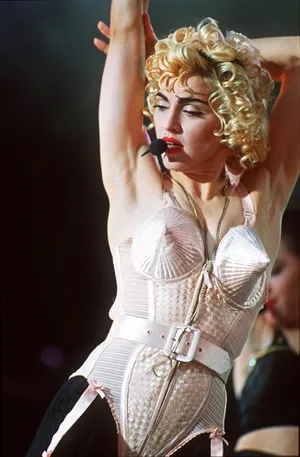
Madonna’s response to a nude photos scandal rebuffed media shaming of women
As Madonna prepared for her Live Aid performance in July 1985, Penthouse and Playboy revealed they’d obtained nude photos of the singer from her “difficult days in New York.” She issued a response in the New York Post, remaining unapologetic about the photos with the bold headline “I’m Not Ashamed.”
Taking the stage, Madonna poked fun at the scandal with playful charm. When concertgoers shouted encouragement to take her jacket off, Madonna shot back, “You might hold it against me 10 years from now.”
“She was on the biggest stage the world had ever seen,” Gabriel says. “She made a joke of it, and that gave women the license from that moment on to say to people who wanted to shame them, ‘It’s not going to happen. I am who I am. I do what I do. You can’t hurt me.’ "
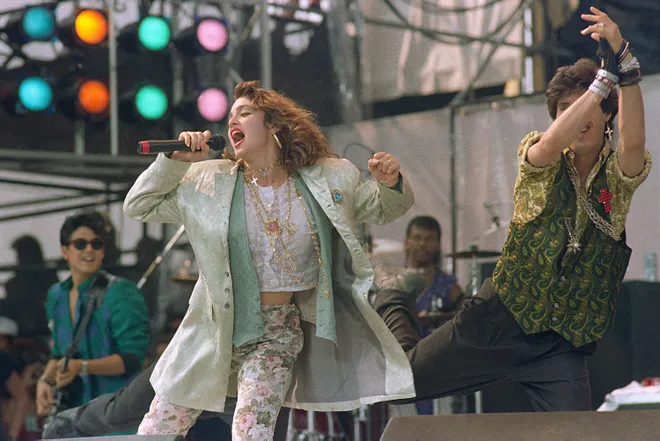
Madonna’s unfiltered ‘Truth or Dare’ documentary made her queer icon
Foreshadowing the voyeurism of reality television, Madonna teamed up with music video director Alek Keshishian on the documentary “Truth or Dare,” which offered a “warts-and-all” portrayal of Madonna as she navigated the rigors of her Blond Ambition tour.
“If something made her ask herself, ‘Is that how I really am? Is that how I act?’ or if it made her uncomfortable, then she knew she should keep it in. She didn’t edit out what she didn’t want people to see,” Gabriel says.
The 1991 film also gave an intimate look at the lives of Madonna’s backup dancers and singers, many of them openly gay, humanizing LGBTQ representation amid the AIDS epidemic and cementing Madonna’s status as a queer icon.
“It was really an expression of survival at a moment when the gay community had been condemned to death,” Gabriel says. “The community has been loyal to her because of that: They recognize the chances she took."
Madonna endured ‘misogynistic atmosphere’ while filming ‘Dangerous Game’
Madonna signed on to star in the 1993 neo-noir drama “Dangerous Game,” led by “King of New York” director Abel Ferrara and co-starring Harvey Keitel. Madonna’s hopes for the film, however, were dashed as she contended with the production’s “misogynistic atmosphere” and the male-dominated movie industry.
Ferrara used rehearsal footage of Madonna, including the singer’s retelling of her 1979 rape to Keitel, without her consent in the film. He also allegedly swung at her after an argument on the set, the book says.
USA TODAY has reached out to Ferrara’s representative for comment.
“She thought it was going to be a feminist statement about the film industry, that she playing an actress in the film was going to be someone who could challenge the relationship between the male lead and the director,” Gabriel says. “It turned out to be the opposite of that.”
Madonna turns 65:So naturally we rank her 65 best songs
Why Madonna’s fight against ageism ‘makes perfect sense’
Madonna, 65, has dealt with scrutiny of her age for much of her career, from rumors that her 2001 Drowned World tour would be her last (because she was 43) to BBC Radio declining to play “Living for Love” in 2015 (when she was 56), citing the station's young target audience.
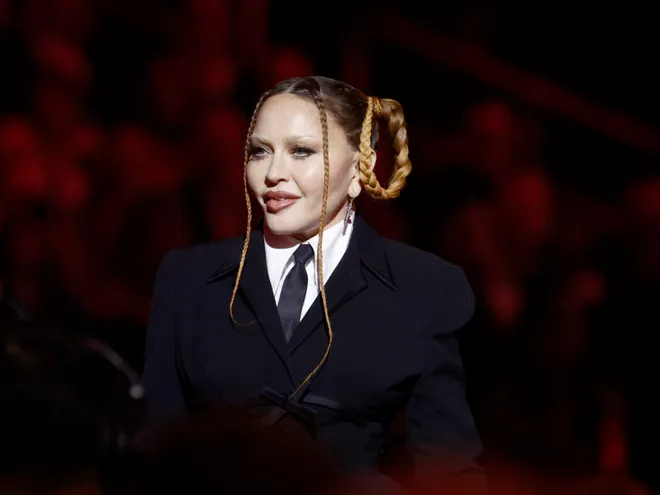
Following her appearance at the Grammy Awards in February, Madonna hit back at social media users who scrutinized her appearance, piling onto fans’ ongoing discussion of “how she looks and whether she should have had facial treatments or plastic surgery.”
“Throughout her life, she’s fought her way out of one box after another,” Gabriel says. “Her message has been from the start, ‘This is my body. This is my face. This is who I am. I’ll do what I want,’ and that’s still her message and we should respect that.”
- “Madonna: A Rebel Life” at Amazon for $30
- “Madonna: A Rebel Life” at Bookshop.org for $36
'Erotica':The Madonna album showed that sex doesn’t always sell. But it can move the needle.
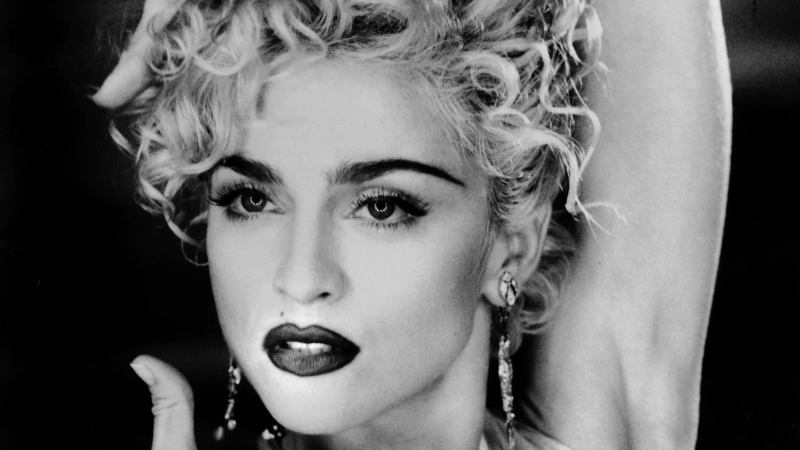
Disclaimer: The copyright of this article belongs to the original author. Reposting this article is solely for the purpose of information dissemination and does not constitute any investment advice. If there is any infringement, please contact us immediately. We will make corrections or deletions as necessary. Thank you.







